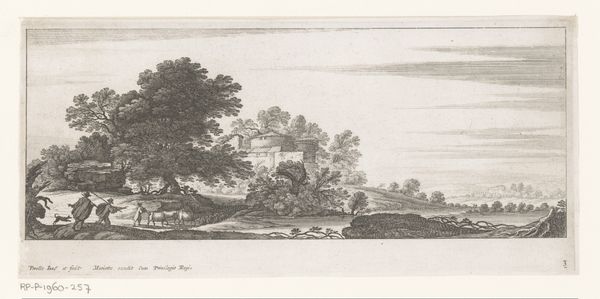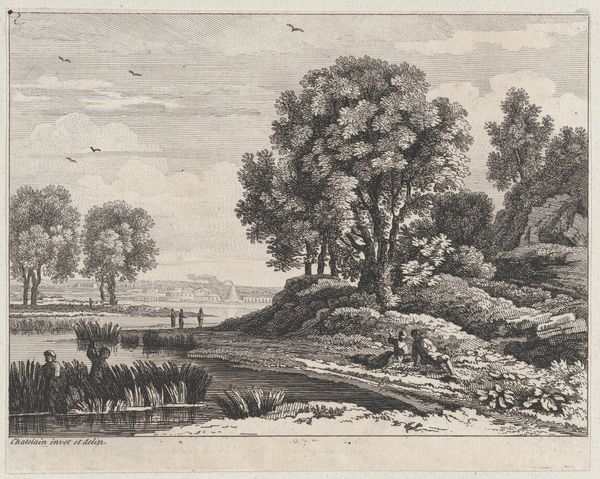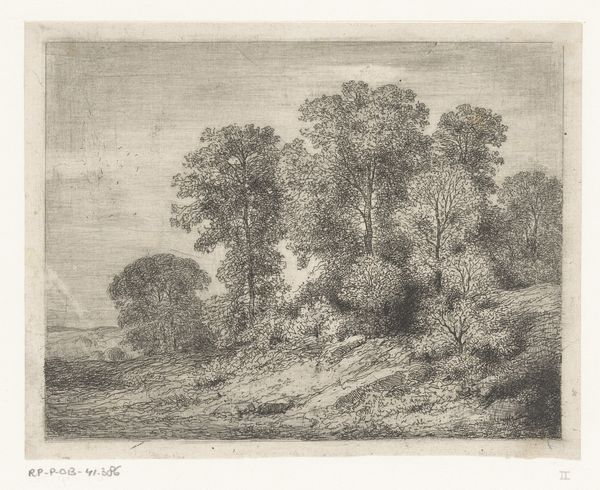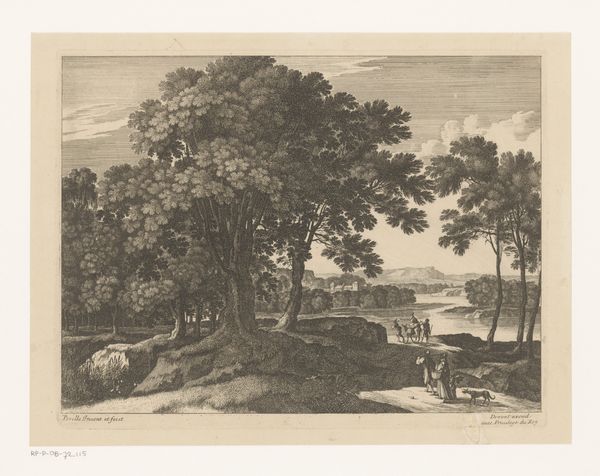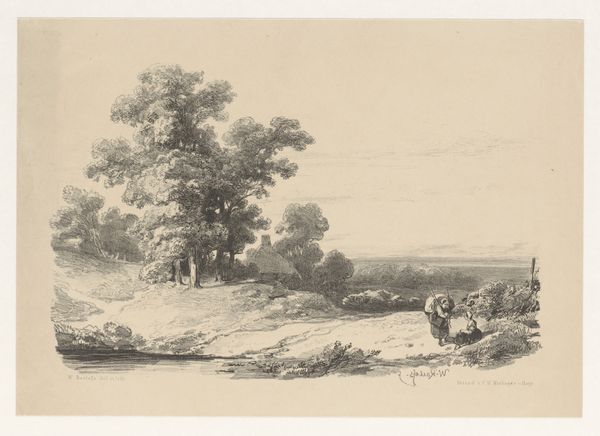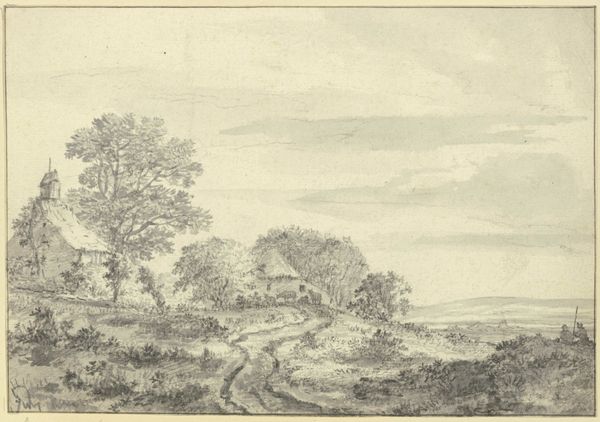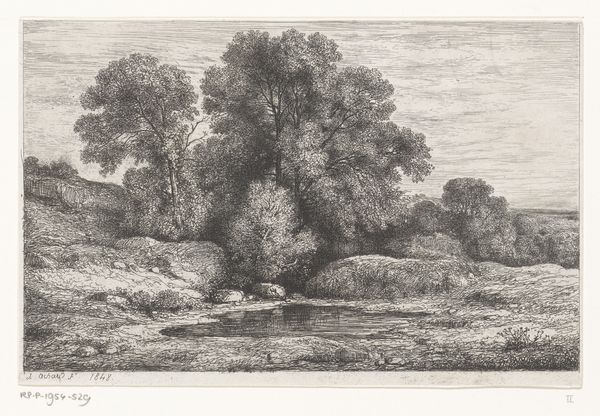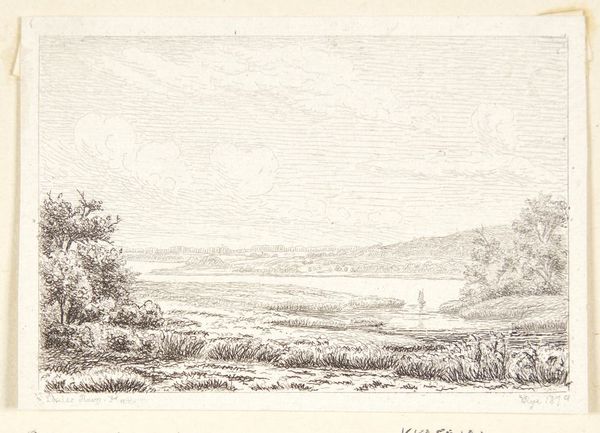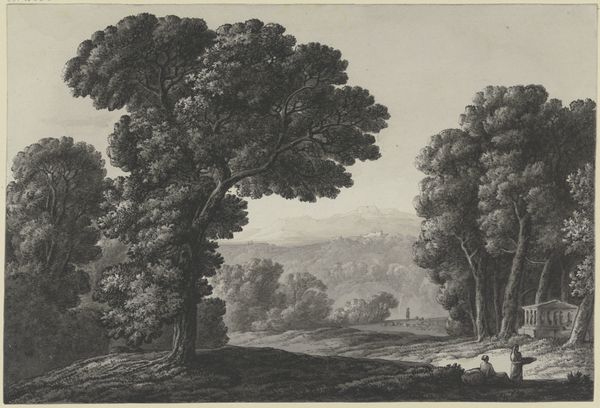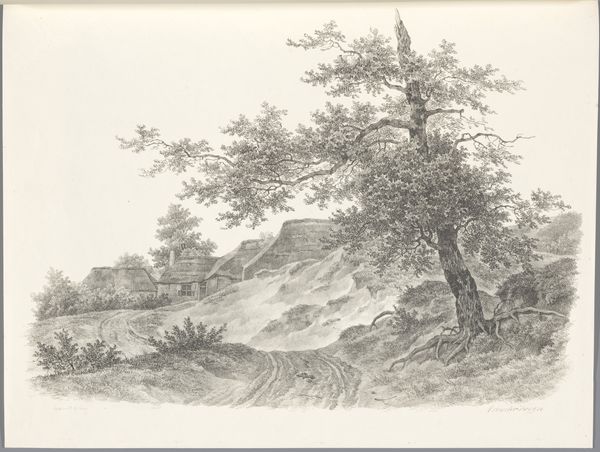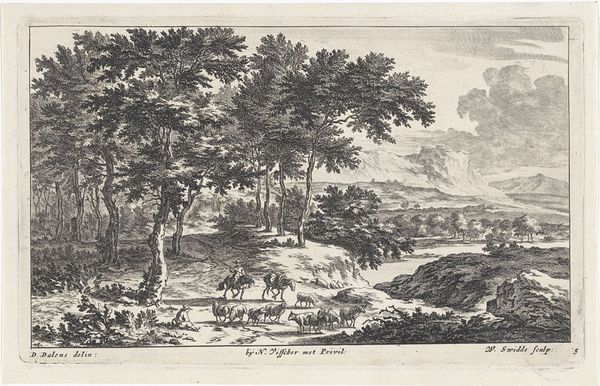
print, engraving
#
dutch-golden-age
# print
#
old engraving style
#
landscape
#
figuration
#
line
#
engraving
#
realism
Dimensions: height 114 mm, width 253 mm
Copyright: Rijks Museum: Open Domain
Curator: Welcome. We're looking at Nicolas Perelle’s “Landscape with Figures and Donkey,” an engraving created sometime between 1613 and 1657, held here at the Rijksmuseum. Editor: It has a remarkable, quiet stillness to it. The scene feels expansive, yet somehow intimate, because of the line work. Everything feels balanced, measured, calm. Curator: Landscapes of this era, particularly in print form, served a dual purpose. While aesthetically pleasing, they also frequently evoked classical or biblical allegories and spoke to the relationship between humanity and nature, echoing ideas of Arcadia. What figures might these people and that beast of burden signify? Editor: The formal rendering gives hints. See how the clustered trees function almost like a stage curtain, framing the narrative? The receding planes draw the eye into a sort of pictorial depth, all created through remarkably simple and repetitive linear marks. The scale differences, though, between foreground figures and the background are less persuasive, less naturalistic to modern eyes. Curator: Indeed. Consider the donkey—a symbol frequently associated with humility, patience, and even the journey to Jerusalem. And what about those travellers near the large rocks or even possibly bandits in a hideout? The human figures underscore both labour and the potential for life's unexpected encounters. Editor: Those outcroppings provide a nice visual anchor. They almost bisect the composition horizontally and vertically and reinforce that structured depth I mentioned. Curator: These sorts of landscape prints often functioned as models or references for other artists too, establishing a kind of visual shorthand across Europe. This composition has echoed in countless paintings. It’s not merely about observation, it’s about disseminating a constructed idea of an idyllic world, or perhaps some hidden warning. Editor: Fascinating how seemingly simple lines can convey such depth, both literal and metaphorical. It makes you appreciate the enduring power of form and how much information is in even one compositional view of nature. Curator: It indeed prompts a look at where symbols from landscape traditions have taken us and where our landscape understanding will lead us in the future.
Comments
No comments
Be the first to comment and join the conversation on the ultimate creative platform.
